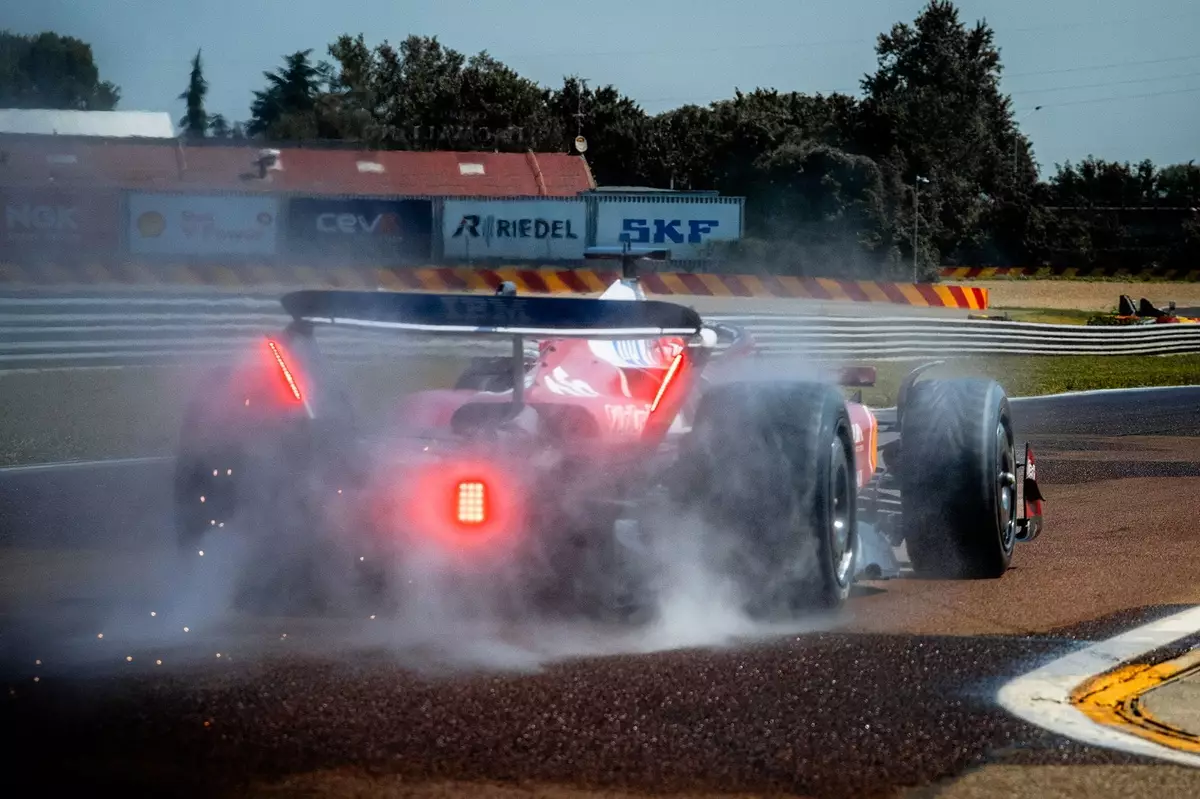In the high-octane world of Formula 1 racing, where every millisecond counts, the performance of racing tyres can be the difference between glory and disappointment. One of the most perplexing innovations in this domain is the wet tyre, engineered by Pirelli to tackle adverse weather conditions. However, despite the technological marvel represented by these blue-sidewalled tyres, their potential remains largely untapped during real race conditions. This article delves into the complexities of wet tyre performance, the challenges that plague them, and Pirelli’s ambitious endeavours in developing a next-generation tyre that integrates seamlessly into the unpredictable world of F1.
The Dilemma of Wet Tyres
When conditions turn wet, many fans expect to see drivers tearing through puddles like their slick counterparts. However, what often unfolds is a scene that feels more akin to a slow-motion ballet rather than an adrenaline-infused race. Pirelli’s wet tyres can displace an astonishing 85 litres of water every second at racing speeds. In ideal circumstances, this should translate into superior performance. However, as witnessed in recent races, such as the infamous Belgian Grand Prix of 2021 and more recently in São Paulo, wet tyres have been relegated to the sidelines, as drivers opt for intermediates, waiting for red flags rather than risking track position.
This conundrum stems from the inability of the extreme wet tyre to maintain grip and temperature in anything but the most extreme scenarios. Pirelli’s current wet tyres tend to overheat quickly and degrade rapidly, proving useless outside of red-flag conditions. Consequently, the wet tyre remains a rarity on the track when needed the most. A glaring deficiency in a sport that thrives on precision and performance.
The Quest for Improvement
Mario Isola, Pirelli’s motorsport manager, recognizes the faults within the current wet tyre experience. Looking towards 2026, Pirelli aims to create a wet tyre that functions more like an intermediate, with a focus on durability and usability across varying conditions. Isola highlights the necessity of a clearer crossover point between wet and intermediate tyres, an area where current models fail. The speed at which drivers typically transition from slicks to intermediates indicates this requirement—an area where the old wet tyres faltered dramatically.
Recent testing at Ferrari’s Fiorano circuit showcases Pirelli’s strides in refining tyre technology. Utilizing ‘mule cars’ to simulate the forthcoming regulations of 2026, Pirelli is diligently validating improvements to both wet and intermediate compounds. Yet, this approach has its downsides; the reliance on mule cars complicates the testing process and unseasonable weather can also thwart optimal assessments. That said, the feedback from drivers such as Charles Leclerc and Zhou Guanyu suggests that the direction taken is promising, albeit fraught with uncertainty.
Striking the Right Balance
Optimizing the “crossover” point where intermediates become more beneficial than full wet tyres is imperative. Historically, this point has been nuanced and difficult to track. The aim is to reduce the lap time disparity between dry and wet conditions, a target that Pirelli is aggressively pursuing. Testing indicates that the current wet tyre operates adequately around a crossover marking of 118% compared to dry lap times—a marginal improvement over older models but still falling short of Pirelli’s 116% target.
This challenge speaks volumes about the intricate relationship between tyre design, weather variability, and driver reaction times. The ideal scenario remains elusive: combining technical mastery in tyre development with the unpredictable nature of motorsport. Perhaps, more aid can come from data analysis and simulations that enhance understanding of how drivers will react when the track turns slippery.
Future Prospects and Challenges
The stakes are high as Pirelli shifts its focus to developing a wet tyre that not only performs well under limited visibility but also remains reliable and competitive throughout the race. With F1 more than just a test of speed but a chess match of strategy, the prospect of a superior wet tyre could significantly alter race dynamics. The implication is clear: as Pirelli fine-tunes its wet tyre while moving toward 2026, both teams and fans alike hold their breath, awaiting an evolution that could redefine racing in the rain.
Unlocking the full potential of wet tyre technology is not just a challenge for Pirelli; it is a vital step for the future of Formula 1 itself. With sustained innovation and focused testing, perhaps the day will come when witnessing an F1 wet tyre truly unleash its capabilities on the racetrack becomes less of a fairy tale and more of a race-winning reality.

